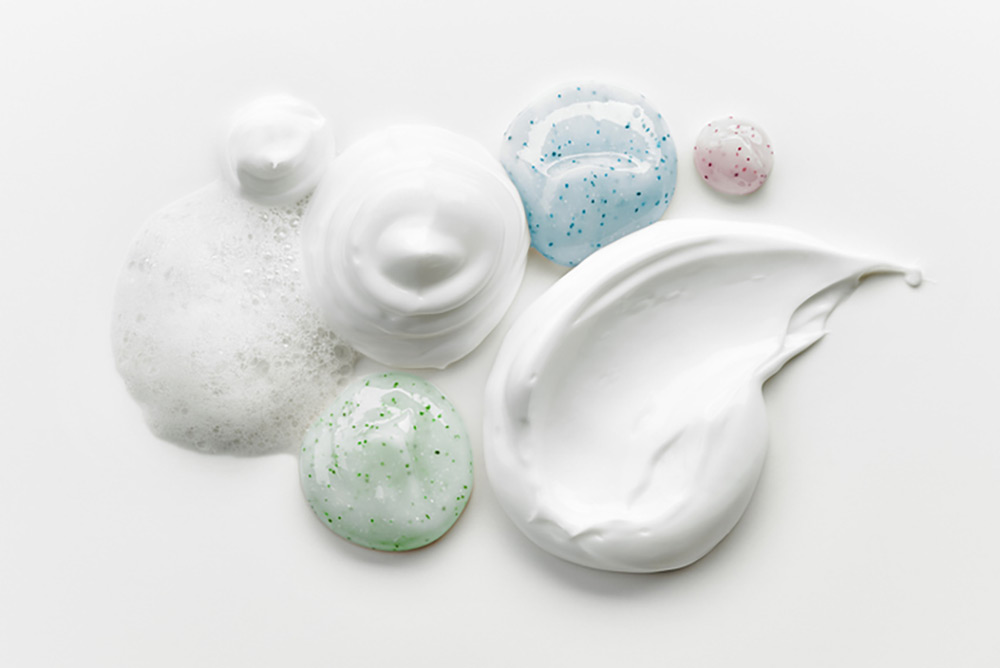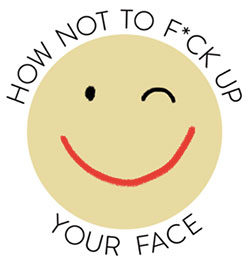By Valerie Monroe
If you’re interested in feeling happier about your appearance—especially as you age—you might like reading what she has to say about it. For more of her philosophical and practical advice, subscribe for free to How Not to F*ck Up Your Face at valeriemonroe.substack.com.
THERE SEEMS to be a disturbing trend of younger and younger girls (mostly) adopting elaborate skincare routines that require an arsenal of products. The goal appears to be achieving “glass skin” (perfect to the point of looking inhuman), which is often promoted on social media. I first noticed the trend when a PR person sent me a pitch offering a plastic surgeon’s advice about what young girls should be doing to enhance and preserve their skin, involving an inappropriately large number of steps and products. Then I received this reader email . . .
Q: The girls I care about are entering adolescence in a time of multistep facial cleansing routines, TikTok videos with filters and professional lighting, and a certain commercially homogenized beauty ideal, in addition to (as always) holy grail cosmetic products. What are the simplest steps and products upon which to build a basic beauty and skincare routine that will serve them well throughout the years to come? And what would you recommend to help them establish healthy self-regard?
A: My initial reaction, as you’ll suspect, is, This can’t be good. Because who benefits most from indoctrinating kids into elaborate, unnecessary skincare routines? Not the kids.
In my limited experience raising a male child, the imperative at pre-adolescence and adolescence was to be sure a soapy shower was taken regularly. My own initiation into skincare, which didn’t start until age 17, involved only an antibacterial face wash called pHisoHex. For specifics about why a multistep routine might not be a great idea for girls, I turned to two dermatologists with kids of their own.
“There’s nothing wrong with taking care of your skin and adopting good habits at an early age. But there’s a point where preteen and teenage skincare regimens can feel like indoctrination into a beauty cult. Which can involve a quest for an unattainable holy grail,” said dermatologist Laurel Geraghty, MD, hitting the nail on the head.
She has patients—and an increasing number of teens and tweens—on a seemingly never-ending pursuit of perfect skin, obviously an unrealistic ideal. “These girls feel they can only achieve their goal through boundless research and the purchase and application of every last product on the hallowed shelves of Ulta Beauty,” said Geraghty. And the results can be problematic.
“I see these girls in my practice often because they’re experiencing side effects of using skincare that’s not appropriate for their skin,” said dermatologist Jessica Weiser, MD. “They watch TikTok videos and then buy a load of products based on an influencer’s recommendations. Not only is this not good for their skin, it can also be damaging to the psyche. There’s immense pressure to have a ‘perfect’ complexion that appears, from these influencers, to be attainable only through expensive products and complex skincare routines.”
Jessica DeFino points out how deep that psychological damage can be in an interview with Tate Ryan-Mosley in MIT Technology Review:
From the standpoint of psychological health, there are definitely studies and surveys that show that teen girls specifically, but also women across the age spectrum, are experiencing higher instances of appearance-related anxiety, depression, body dysmorphia, facial dysmorphia, obsessive beauty behaviors, disordered eating, self-harm, and even suicide. And there’s a lot that can be traced back in one way or another to this increasingly visual virtual world that we exist in.
. . . There is a lot happening in the beauty industry that has been specifically inspired by Instagram. I think a really great example of this is the phenomenon of Instagram face, which is basically a term that’s been coined to describe the way that Instagram filters have inspired real-world procedures and surgeries.
I have interviewed a lot of cosmetic surgeons and cosmetic injectors over the years who tell me that patients use the filters and photo-editing tools that are really popular on Instagram, but maybe not owned by Meta or Instagram, to alter their own images and bring that in to a plastic surgeon or an injector consult and say, This is what I wanna look like . . .
. . . Issues [that affect] teen girls have historically been swept under the rug and dismissed. Things like beauty are seen as frivolous interests. And if they’re dismissed, we end up not getting enough studies, enough data about the harms of beauty culture, when in reality there are these huge and harmful cultural implications . . .
Additionally, said Weiser, most skincare products are designed for the care of aging skin—and many products being touted for girls are for much more mature skin types. Often the antioxidants, exfoliants, eye masks, and heavy night creams can trigger skin congestion, acne, and rash irritation. Consequently, the elaborate routines frequently do more harm than good.
Geraghty’s concerned about how much our kids (and all of us) feel we need to spend—or “invest,” an interesting word—on what’s often referred to as self-care.
For most people, especially young ones, very little is required to maintain healthy skin. (Though specific skin conditions such as acne, eczema, seborrheic dermatitis, and rosacea should be addressed.) All that’s needed is gentle cleansing, perhaps moisturizing, and above all else, sun protection, said Geraghty.
“I worry about the increasing number of grooming steps now perceived as standard as a part of a young person’s regimen,” said Geraghty. “Pedicures. Manicures. Masks. Hair removal. Highlights. Haircuts. These 12-step skincare routines. And sooner or later, toxins, filler, lasers, etc.”
She observes that among the girls who crave something more, simple doesn’t feel like enough. A choreographed blend of skincare essences and oils and toners somehow rings more true. And of course, they (and we) have influencers and beauty industry marketers to thank for that.
But a complicated routine is so not the personal practice of dermatologists, Geraghty said. “We work with our skin type and remain consistent using a few active, proven ingredients. And we’re fanatics about sun protection. Which, by the way, is the best lesson for kids, as it’s the one lifelong gift we can give our skin.”
Because I was thinking about the deleterious influences of beauty culture, I asked an online friend, former ER doctor, and founder of the skincare line Osmia if she might share something about her experience running a small beauty business with healthier, more honorable intentions. What drew me to Sarah Villafranco, MD, is not only her mission, but also her deep understanding of the science of skincare. Here, she captures her reasons for getting into the business of beauty:
In my decade of practice as an emergency physician, I observed the many ways in which our daily patterns of nutrition, sleep, and stress management create or destroy our health over time. A more insidious habit? The way we talk to ourselves in the mirror. If the tone is critical, negative, and rooted in unrealistic expectations (which it is for the vast majority of us), the relationship to self becomes worse than toxic; it’s abusive—and it takes a terrible toll on us in a more-than-skin-deep way.
When I left the ER, I hoped to inspire healthier daily habits with joy, rather than shame. I thought if using a bar soap or body oil or face cream could weave tiny filaments of delight through your days and weeks, it might help you excavate a kinder voice to use in the mirror. And if those products also helped you achieve healthier, happier skin, the supportive inner dialogue would become more accessible and authentic over time.
But I’m a tiny fish swimming against a riptide in the beauty industry sea. The pollution of anti-aging culture swirls all around me. I find it especially suffocating when I consider how much my beautiful mother would have loved to live long enough to cultivate a few more wrinkles. I watch as customers get sucked in by false promises, trending ingredients, and handsomely paid skinfluencers touting miraculous results.
Even if it would sell more product, I don’t want to play the anti-aging game. So I don’t.
But none of what I do matters if we’re not all doing the communal work of trying to change pernicious beauty standards. And that work starts in the mirror.
I couldn’t agree more. If we walk the walk, surely our kids won’t be far behind?
.
MyLittleBird often includes links to products we write about. Our editorial choices are made independently; nonetheless, a purchase made through such a link can sometimes result in MyLittleBird receiving a commission on the sale. We are also an Amazon Associate.



